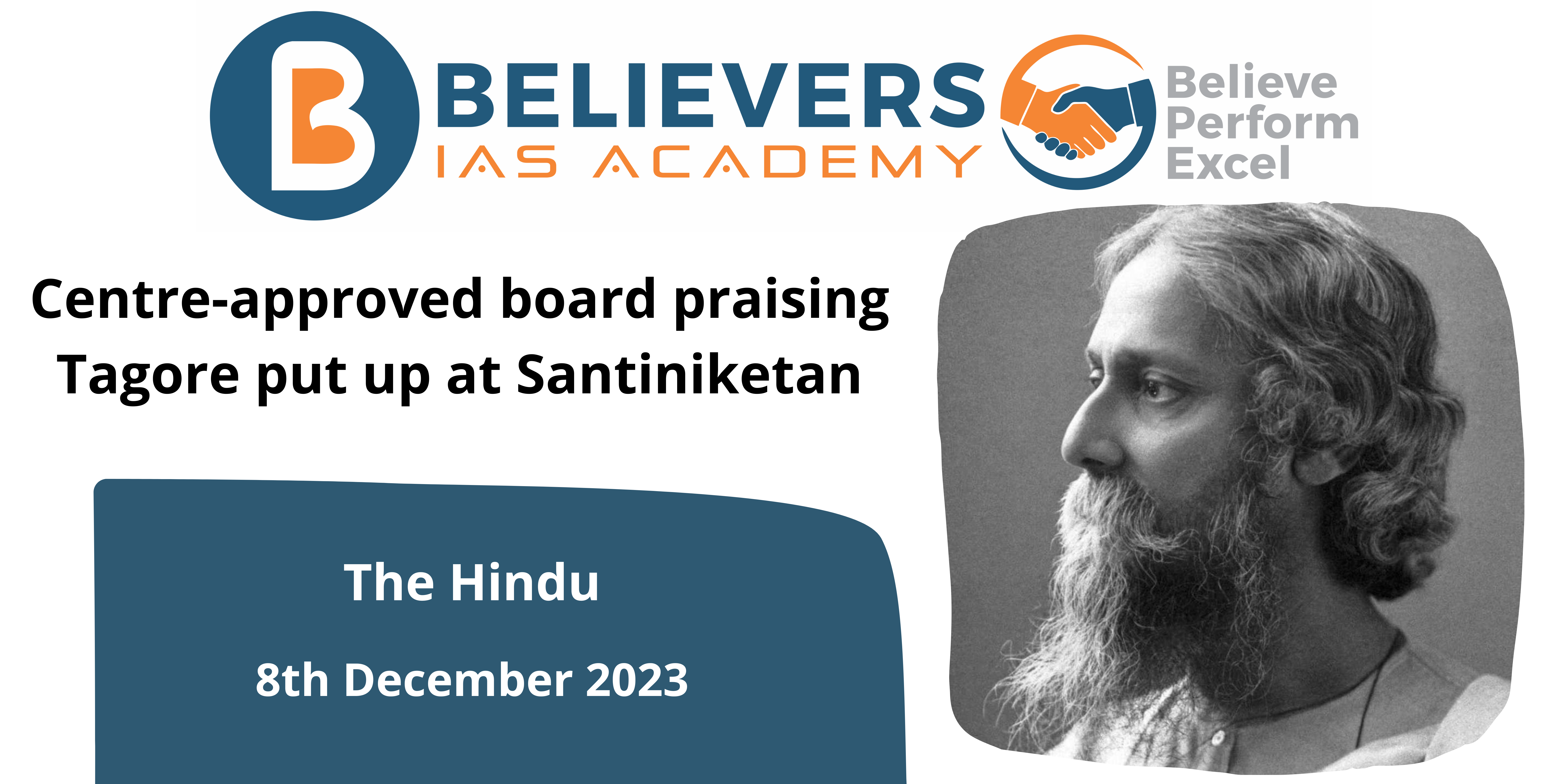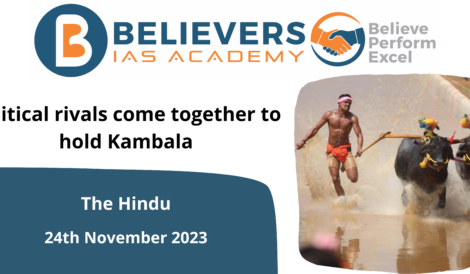Centre-approved board praising Tagore put up at Santiniketan
Context
Visva-Bharati University has finally replaced the contentious plaques marking Santiniketan’s UNESCO World Heritage status with a board approved by the Centre.
What does the World Heritage site signify?
- Definition: World Heritage sites are areas or objects recognized by UNESCO as having “outstanding universal value” and designated for protection under the Convention Concerning the Protection of the World Cultural and Natural Heritage.
- Convention Adoption: The Convention was adopted by UNESCO in 1972, and officially took effect in 1975 after being ratified by 20 countries. Its goal is to encourage international cooperation in preserving and protecting cultural and natural treasures around the world.
- Types of Sites: There are three types of World Heritage sites: cultural, natural, and mixed.
- Cultural Sites: Cultural heritage sites include hundreds of historic buildings, town sites, important archaeological sites, and works of monumental sculpture or painting. These sites represent human creativity, artistic expression, and cultural significance.
- Natural Sites: Natural heritage sites are restricted to natural areas that meet certain criteria, such as furnishing outstanding examples of Earth’s record of life or geologic processes, providing excellent examples of ongoing ecological and biological evolutionary processes, containing natural phenomena that are rare, unique, superlative, or of outstanding beauty, or furnishing habitats for rare or endangered animals or plants or are sites of exceptional biodiversity.
- Mixed Sites: Mixed heritage sites contain elements of both cultural and natural significance.
- Selection Process: The selection process for World Heritage sites is rigorous and involves nomination, evaluation, and decision-making by the World Heritage Committee. The Committee consists of representatives from 21 member states elected by the General Assembly of States Parties to the Convention.
- Criteria for Selection: To be considered for designation as a World Heritage site, a site must meet at least one of ten selection criteria. These criteria include representing a masterpiece of human creative genius, containing exceptional natural beauty or aesthetic importance, providing outstanding examples of human settlements, land use, or sea use, or bearing unique testimony to a cultural tradition or civilization.
- Number of Sites: As of 2021, there are over 1,100 World Heritage sites located in 167 countries around the world.
- Importance of World Heritage Sites: World Heritage sites are important because they represent some of the world’s most significant cultural and natural treasures. They also contribute to the sustainable development of local communities and serve as important educational tools for future generations.
What do we know about the place Shantiniketan?
- Santiniketan is a university town located around 100 miles north of Kolkata in the Birbhum district of West Bengal, India.
- The town was originally an ashram built by Debendranath Tagore, father of the famous poet and philosopher Rabindranath Tagore.
- Debendranath Tagore, also known as Maharshi, was a leading figure of the Indian Renaissance who believed in the worship of the Formless and rejected any idol worship, sacrificial fires, or rituals in Santiniketan.
- The ashram was intended to be a place where people from all castes and creeds could come and meditate on the Supreme God.
- The name Santiniketan means “abode of peace” in Bengali.
- It was at Santiniketan that Maharshi had a spiritual realization while meditating under a glade of Chhatim trees, which were the only vegetation in the arid land of Birbhum.
- Rabindranath Tagore also spent a lot of time meditating under the Chhatim trees during sunset and considered the spot to be hallowed.
- In 1921, Rabindranath Tagore established Visva-Bharati University in Santiniketan, intending to bring together the best of Indian and Western education systems.
- The university was founded on the principles of holistic education, where students were encouraged to explore various fields of study in an environment free from the constraints of traditional classroom education.
- The curriculum was interdisciplinary, with a focus on the development of the mind, body, and soul.
- Over the years, Visva-Bharati University has become a hub for artists, writers, and intellectuals.
- The university has produced several renowned alumni, including the filmmaker Satyajit Ray and the artist Nandalal Bose.
- The town of Santiniketan is home to several museums, including the Rabindra Bhavana Museum, which houses the personal effects and manuscripts of Rabindranath Tagore.
- Santiniketan is also a centre for art and culture, with several art galleries and cultural festivals held throughout the year, including the Poush Mela and Basanta Utsav.
- Today, Santiniketan continues to be a testament to the vision of Rabindranath Tagore and his belief that education should be a journey of self-discovery and exploration.
What was the controversy over the Santinikethan?
- Background and Controversy:
-
-
- Santiniketan, the home of Visva-Bharati University and founded by Debendranath Tagore, was designated a UNESCO World Heritage Site in mid-September.
- Plaques were constructed to commemorate the location, but they sparked controversy because they solely contained the names of Prime Minister Narendra Modi and then-Vice-Chancellor Bidyut Chakrabarty.
-
- Administrative Reaction:
-
-
- The administration maintained that the plaques were only temporary and used for delineation.
- The inclusion of the names of the Chancellor and Vice-Chancellor was supposed to be for authentication.
-
- Archaeological Survey of India (ASI) and Ministry of Education Participation:
-
-
- The ASI developed documents in Hindi and English that were authorized by the Union Ministry of Education in late November.
- These texts were forwarded to Visva-Bharati for editing and Bengali translation.
-
- The New Board’s Content:
-
-
- Santiniketan is presently emphasized by the board as a beacon of international conversation and artistic expression, echoing Rabindranath Tagore’s goal.
- It exemplifies the spirit of innovation and peace, as well as the search for knowledge and unity in variety.
- Clarification Footnote: To avoid future debate, the board included a footnote saying that the content is the officially approved UNESCO recognition statement, as endorsed by the Ministry of Education.
-
- Overall Consequences:
-
- The debate highlights the sensitivity surrounding the representation of UNESCO-designated heritage sites.
- It underlines the significance of appropriately reflecting historical personalities such as Rabindranath Tagore’s accomplishments and vision.




